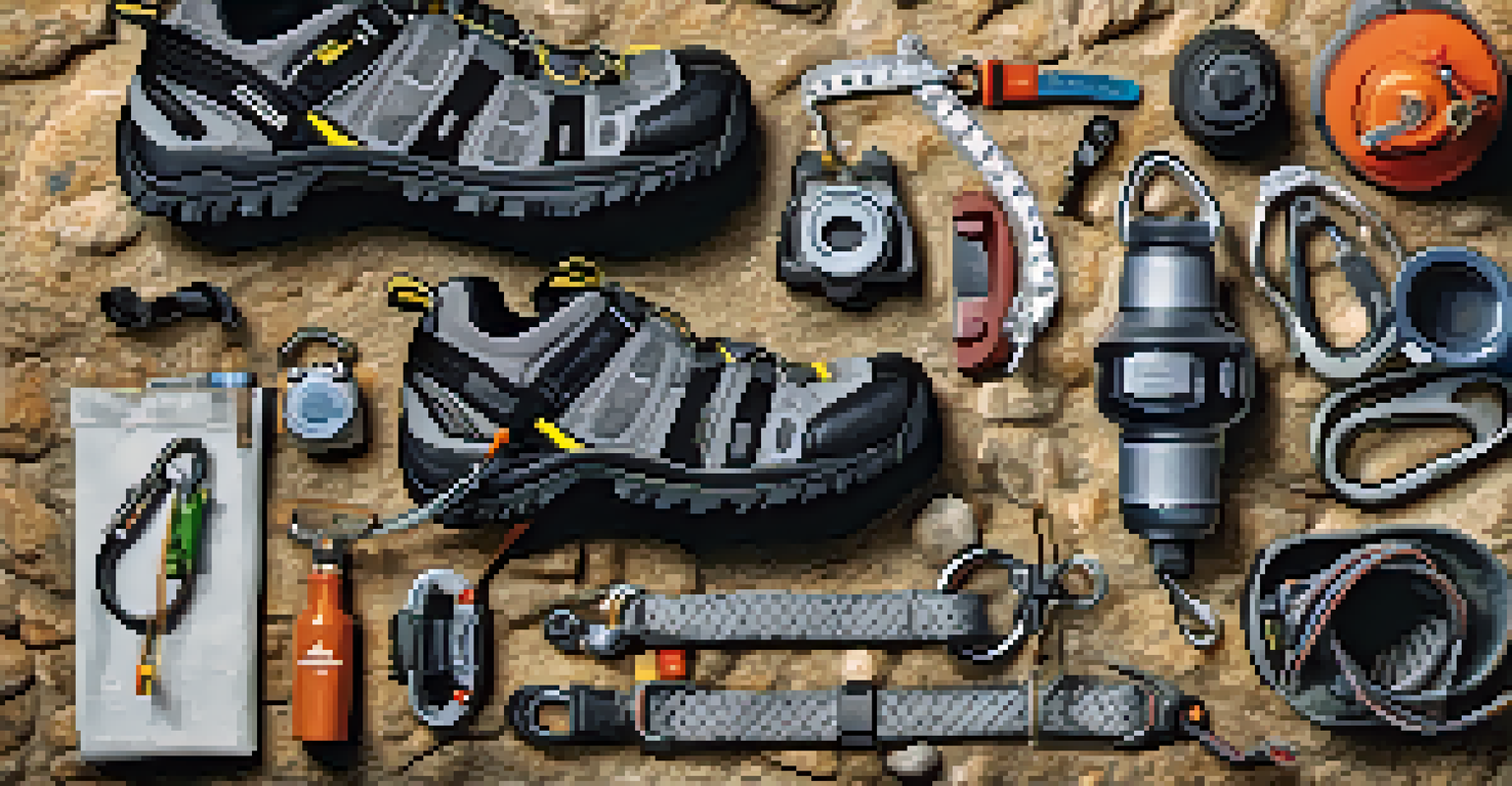Ultimate Guide to Rock Climbing in California's Mountains

Discovering California's Best Rock Climbing Locations
California is home to some of the most breathtaking rock climbing spots in the world. From the iconic granite faces of Yosemite National Park to the sandstone cliffs of Joshua Tree, climbers have a diverse range of terrains to explore. Each location offers its unique challenges and stunning views, making your climbing adventure unforgettable.
Climbing is not just about reaching the top; it's about the journey, the challenges, and the community you build along the way.
Yosemite’s El Capitan is a dream for many climbers, featuring routes that test even the most skilled. Meanwhile, in Joshua Tree, the unique rock formations provide a different kind of thrill, perfect for both bouldering and traditional climbing. These varied environments cater to climbers of all skill levels, ensuring everyone can find their perfect climb.
Whether you're a beginner or an expert, California's mountains have something for you. Knowing where to go can enhance your experience, as each site has its distinct climbing culture and community. So, pack your gear and get ready to explore the peaks!
Essential Gear for Rock Climbing Adventures
Having the right gear is crucial for a safe and enjoyable climbing experience. At a minimum, you’ll need climbing shoes, a harness, and a helmet. For outdoor climbing, consider bringing a rope, carabiners, and protection gear like cams and nuts, depending on your route.

Investing in high-quality gear can significantly enhance your performance and safety. For instance, well-fitted climbing shoes can improve your grip on the rock, while a comfortable harness will keep you secure without causing discomfort. Remember, gear tailored to your climbing style and the specific environment can make all the difference.
Join a Climbing Community
Connecting with local climbing clubs and engaging with experienced climbers can enhance your skills and enrich your climbing journey.
Don't forget about safety equipment! A first aid kit and a chalk bag may seem minor, but they can play a vital role in your climbing day. Always check your gear before heading out, ensuring everything is in good condition and ready for your adventure.
Climbing Techniques for Success in California's Terrain
Mastering climbing techniques is essential for tackling California’s diverse routes. Proper foot placement and body positioning can significantly affect your ascent. For instance, using your legs efficiently can help conserve energy, allowing you to climb longer and tackle more challenging routes.
The best climber in the world is the one who has the most fun.
Practicing techniques like route reading and dynamic movement can also enhance your climbing skills. Route reading involves analyzing the rock face to identify the best path, while dynamic movement refers to using momentum to reach distant holds. These skills can be particularly useful in areas with complex rock formations.
Additionally, don’t underestimate the power of practice. Regular climbing sessions, whether indoors or outdoors, can help you refine your techniques and build confidence. As you gain experience, you’ll find it easier to navigate the unique challenges that California’s mountains present.
Safety Tips for Rock Climbing in California
Safety should always be your top priority when rock climbing. Before you start, familiarize yourself with the area and its specific risks, such as loose rock or changing weather conditions. Always check the local climbing regulations to ensure you’re climbing responsibly and ethically.
Using safety gear correctly is vital to prevent accidents. Make sure your harness is properly adjusted and that you know how to tie knots securely. Additionally, having a reliable climbing partner who can double-check your setup can significantly enhance safety on the route.
Top Climbing Spots in California
Explore diverse terrains like Yosemite and Joshua Tree, offering unique challenges and stunning views for all skill levels.
Lastly, be prepared for emergencies. Carry a first aid kit and know basic first aid principles. Understanding how to respond to injuries can make a crucial difference in a climbing situation, ensuring both you and your climbing partner stay safe on the mountain.
Finding the Right Climbing Community in California
Joining a climbing community can enhance your experience and provide valuable support. California has numerous climbing clubs and online forums where climbers share tips, organize meetups, and discuss local routes. These communities are fantastic resources for learning and making connections with fellow climbers.
Participating in group climbs or local climbing events can also help you meet like-minded individuals. Engaging with seasoned climbers allows you to gain insights into climbing techniques, gear recommendations, and safety practices. Plus, it’s a great way to find climbing partners who share your passion.
Don’t hesitate to reach out and ask questions. Most climbers are more than willing to help newcomers. Whether you’re looking for guidance or simply want to share your climbing stories, connecting with others can enrich your climbing journey and create lasting friendships.
Best Time of Year for Rock Climbing in California
Timing your climbing trips can greatly affect your experience. In California, the best seasons for climbing are typically spring and fall when temperatures are milder and conditions are optimal. During these times, you can enjoy comfortable weather and avoid the sweltering heat of summer or the chill of winter.
However, certain locations may have their unique peak seasons. For example, Joshua Tree sees an influx of climbers in the cooler months, while Yosemite is best climbed in late spring or early fall. Being aware of these patterns can help you plan your trips effectively and enjoy the best conditions.
Essential Gear for Safety
Having the right climbing gear, including shoes, harnesses, and safety equipment, is crucial for a secure and enjoyable experience.
Additionally, consider checking local forecasts before heading out. Weather can change quickly in mountainous areas, and being prepared for unexpected conditions can enhance both your safety and enjoyment while climbing.
Environmental Considerations for Climbers in California
As climbers, it's essential to be mindful of the environment and practice Leave No Trace principles. This means respecting wildlife, minimizing campfire impact, and properly disposing of waste. California's beautiful climbing areas are worth preserving for future generations to enjoy.
Be aware of sensitive areas and seasonal closures, which are often put in place to protect wildlife during nesting or mating seasons. Staying informed about these regulations not only helps the environment but also ensures you're climbing in designated areas, avoiding potential fines.

Participating in local clean-up events or conservation efforts is a great way to give back. Many climbing communities organize initiatives to maintain trails and climbing routes. Getting involved not only helps the environment but also connects you with fellow climbers who share your values.